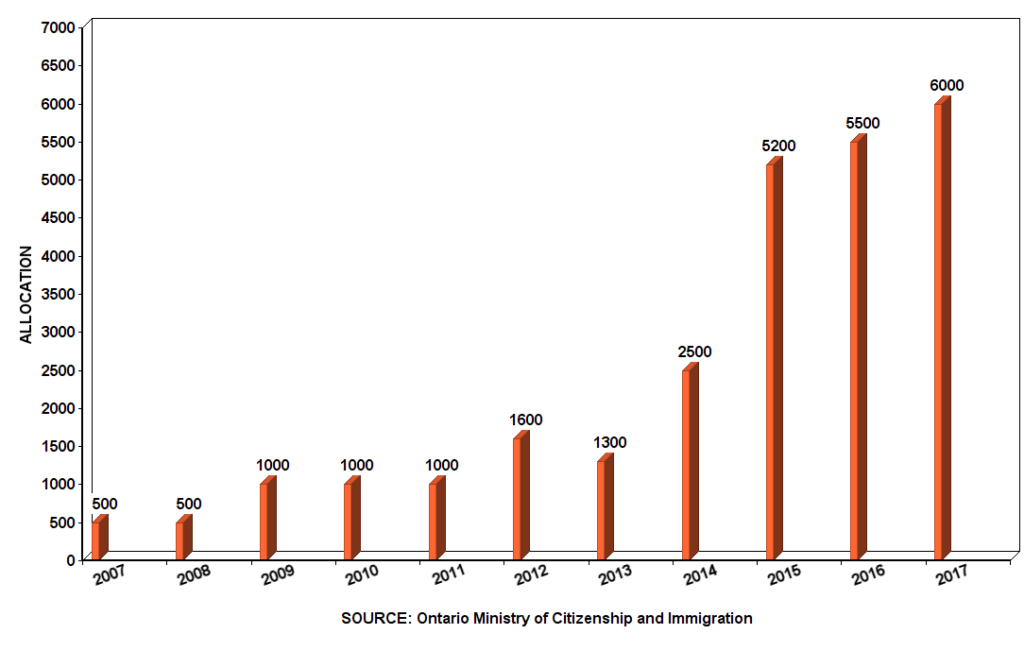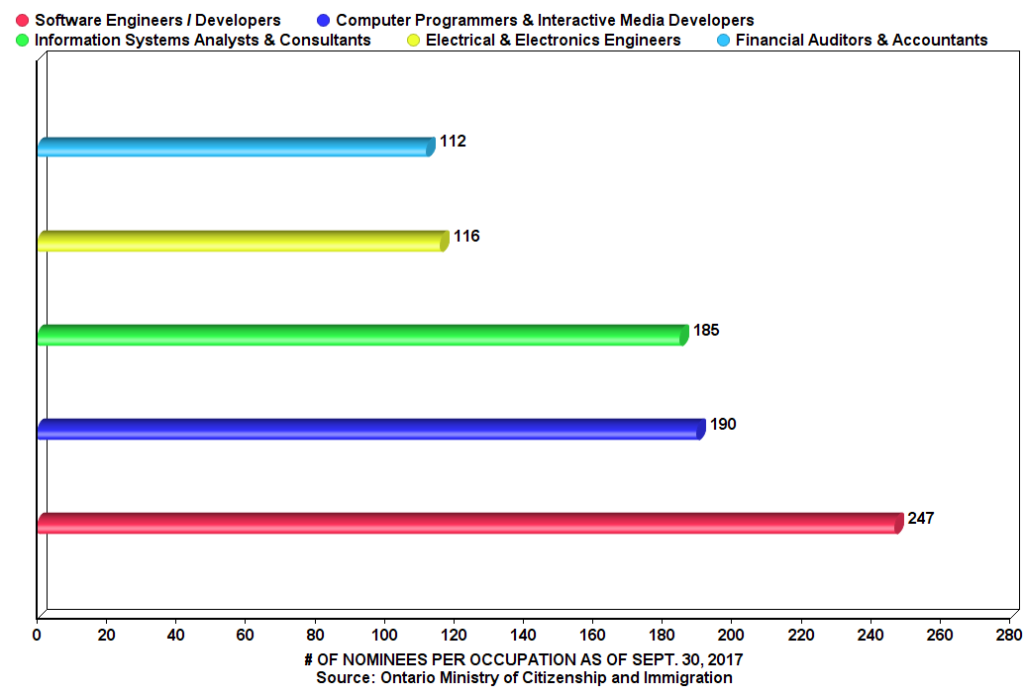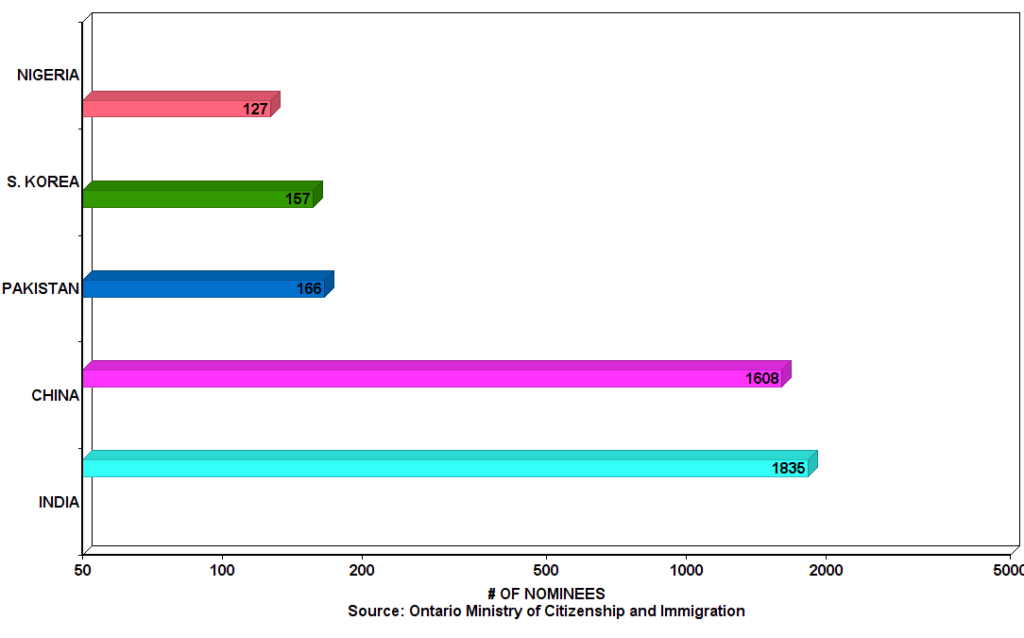New report shows software engineers and designers leading Ontario nominees in 2017
A new progress report on the Canadian province of Ontario’s immigration strategy shows software engineers and designers as the leading occupation category among provincial nominees in 2017, and India and China as the top two source countries.
The update by Ontario's Ministry of Citizenship and Immigration provides information on the Ontario Immigrant Nominee Program (OINP) and other key components of Ontario’s immigration strategy, which was launched in 2012 to address a looming skilled labour shortage in the province.
The OINP allows Ontario to nominate individuals and their families for permanent residence. Skilled workers, international students and entrepreneurs are among those targeted by the program. It also works with employers by supporting their efforts to attract and retain skilled workers.
Ontario was allocated 6,000 nominations through Canada’s Provincial Nominee Program for 2017, its highest allocation in a decade. An additional allocation was subsequently received from Immigration, Refugees and Citizenship Canada (IRCC) in December.

In its report, Ontario said improving the OINP and advocating for “significant increases” to the number of nominees the province is allocated are vital to its immigration strategy.
“Our gains in this regard have been significant, with Ontario’s allocation increasing from 1,300 nominees in 2013 to 6,000 in 2017,” the report states.
Software engineers and designers led the OINP’s top five nominee occupation categories, followed by computer programmers and interactive media developers. The report said the majority of 2017 nominees are employed in Information and Communications Technologies (ICT) occupations.

In terms of country of birth, the OINP reported India leading the way with 1,835 nominees as of Sept. 30, 2017. China was a close second at 1,608 nominees.
Ontario pointed to the launch of two new immigration streams — the Express Entry: Skilled Trades Stream and Employer Job Offer: In-Demand Skills Stream pilot — as further evidence of its focus on improving the OINP’s response to labour market needs in 2017.
- To find out if you are eligible to immigrate to Canada permanently, fill out a free online assessment form.
In order to keep up with demand for the popular OINP, Ontario also expanded its human resources and introduced an online application system in order to reduce processing times.
“Most OINP applications are now being processed within 60 days from the application date,” the report says. “This is a significant improvement and underpins the ministry’s commitment to enhanced customer service.”

The OINP’s popular Human Capital Priorities Stream, which is aligned with the federal Express Entry pool, also opened on a number of occasions in 2017. The stream allows the OINP to search the pool for qualified candidates and issue them a Notifications Of Interest (NOIs), which serves as an invitation to apply for a provincial nomination certificate.
Ontario also launched a new Human Capital Priorities-linked initiative in June 2017 that prioritized Express Entry pool candidates with work experience in 15 Information and Communications Technology-related occupations.
Global Skills Strategy
The Government of Ontario also touted its work with the federal government to reform Canada’s temporary foreign worker system and launch the Global Skills Strategy (GSS) and its Global Talent Stream in June 2017. The two-year pilot helps Canadian businesses find the international talent with in-demand skills. Among other innovations, the GSS provides a two-week service standard for the processing of Labour Market Impact Assessment (LMIA) applications for temporary foreign workers and assists employers to better understand their immigration options.
Minister’s Employers Tables
Another way Ontario is working with employers to discuss challenges and identify labour market needs is a series of roundtables known as Minister’s Employers Tables. Through them, Ontario gathers employer perspectives on immigration needs and best practices in terms of policy and programming. Seven METs heard from 96 employers in 2017 and produced three priority objectives:
- Address barriers to opportunities within the immigrant selection process.
- Improve labour market integration of international talent.
- Develop a business advisory council.
Bridge Training
In 2017, 4,758 skilled newcomers completed a bridge training program funded by the Government of Ontario. These programs help new immigrants by “removing barriers and increasing the number of internationally trained professionals licensed in their professions.” Of that number, 294 achieved licensure in their regulated occupation and another 4,418 went on to find work in their professional field.
Ontario will receive up to $91 million in funding for bridge training programs over the next three years under the Canada-Ontario Immigration Agreement, which the Government of Ontario and the Government of Canada announced in November.
To find out if you are eligible to immigrate to Canada permanently, fill out a free online assessment form.
© 2017 CICNews All Rights Reserved
- Do you need Canadian immigration assistance? Contact the Contact Cohen Immigration Law firm by completing our form
- Send us your feedback or your non-legal assistance questions by emailing us at media@canadavisa.com





